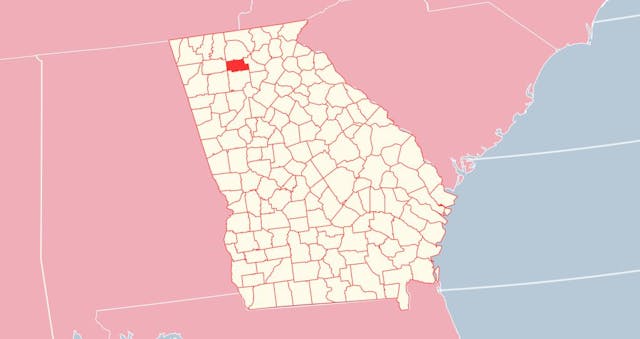Rehabs in Pickens
Pickens county is located in the north-central part of the US state of Georgia. The county center is in Jasper. According to the 2010 US census, the region had a population of 29,431. This province is a part of the Atlanta-Sandy Springs-Roswell, Georgia Metropolitan Statistical Area.
Like the whole of America, Pickens county has also been hit hard by substance abuse. Despite a flow of drug rehab programs coming into GA in the last 5 years, this region still has a major shortage of healing options and resources for the residents who need support.
Rehabs in Pickens county have experienced and licensed medical staff and doctors that are to provide quality addiction treatment services to those suffering from opioid, alcohol, and drug dependence. The main goal of these centers is to return reasonable and satisfactory lives to people who don’t want to struggle with dependence. Keep reading the article to get short information on the available treatment options.
Available Treatment Options
When you are investing in your health and future, you should be sure that you are making the right choice for Pickens county rehabs. So, look through available local facilities, discuss your individual needs, check out the reviews and ratings of that hubs and begin the course of the therapy.
Rehab assures you the best chance of long-lasting recovery. It offers such healing services as detox, inpatient and outpatient therapy, aftercare, etc. These programs are to guide and support individuals on their journey to long-term recovery. Treat the addiction as soon as possible, and as effectively as possible. You may find effective recovery inside the hubs.
Detox
Detox is the process of clearing the body of toxic substances that an individual consumes. The goal of this procedure is to safely manage withdrawal symptoms when someone quits the use of substances.
Everyone experiences withdrawal symptoms differently. However, no one should pass this procedure alone, as withdrawal symptoms can be painful and dangerous to live. This intervention may last from 3 to 10 days. It is not a treatment by itself, it is just a physical preparation for further rehab.
Inpatient Plan
This type of rehab involves the highest level of care with medical staff and around-the-clock supervision and support. Patients reside in these hubs for various lengths depending on their certain conditions. That is why it is also known as residential treatment.
Its average length is 30 days, but 60-day, 90-days, and even longer sessions are also accessible for certain cases. There are also gender-specific inpatient facilities, which are to help their patients to stay focused mainly on the recovery process in a safe and supportive environment.
Outpatient Care
Outpatient rehabs offer substance abuse treatment programs that can be scheduled for various times throughout the week. Hence, the patients continue with their daily routine and at the same time get examined and treated. This plan has such categories as day programs, intensive outpatient programs, and ongoing care. It involves the same type of therapy as inpatient care; however, their intensity can be lower.
Aftercare
To solidify their commitment to sobriety, people usually need ongoing support through aftercare planning. You may participate in peer support groups, skill development courses, sober living houses, etc.
Payment
Therapy can’t cost higher than addiction by itself. So, find a financing option to cover your expenses and build a state of sobriety and healthy life. In total, the cost of detox ranges between $1,000 to $1,500. For residential care, one should pay $6,000 for monthly therapy. Luxury hubs may cost up to $20,000 for a monthly program. The cost of outpatient care starts from$5,000.
People often use their health insurance plans for addiction healing expenses. The main types of insurance are state-financed, private and military insurance, and Medicaid/Medicare.
Not everyone has insurance, but there are still methods to get support. Firstly, you may look for a free or low-income facility. Secondly, examine available financing options. Then, apply for medical loans and financial support from family and friends.

